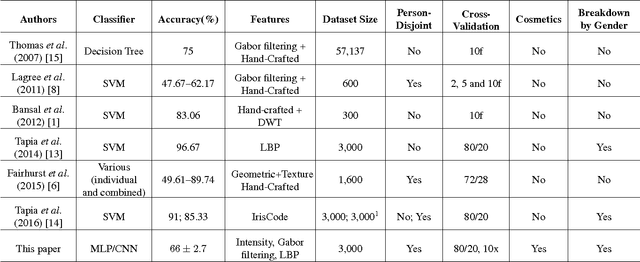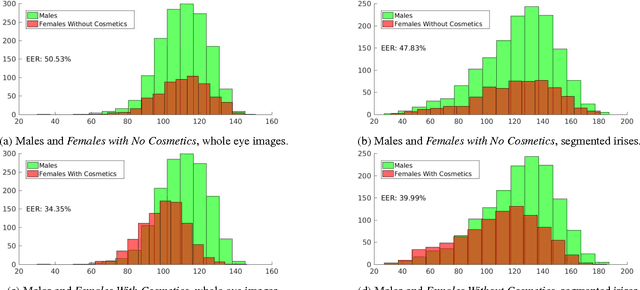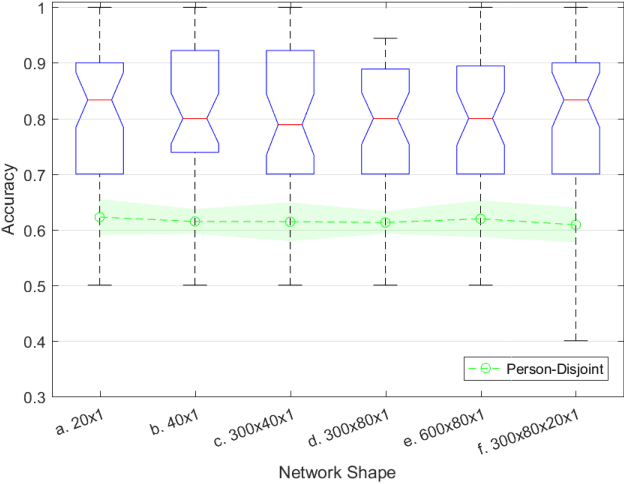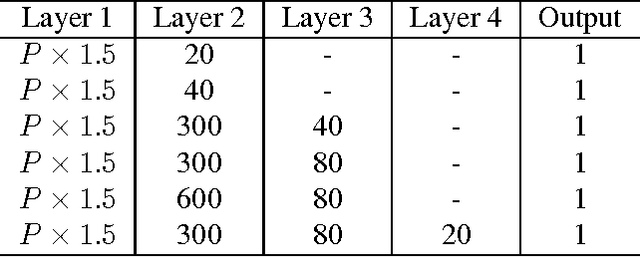Gender-From-Iris or Gender-From-Mascara?
Paper and Code
Feb 04, 2017



Predicting a person's gender based on the iris texture has been explored by several researchers. This paper considers several dimensions of experimental work on this problem, including person-disjoint train and test, and the effect of cosmetics on eyelash occlusion and imperfect segmentation. We also consider the use of multi-layer perceptron and convolutional neural networks as classifiers, comparing the use of data-driven and hand-crafted features. Our results suggest that the gender-from-iris problem is more difficult than has so far been appreciated. Estimating accuracy using a mean of N person-disjoint train and test partitions, and considering the effect of makeup - a combination of experimental conditions not present in any previous work - we find a much weaker ability to predict gender-from-iris texture than has been suggested in previous work.
 Add to Chrome
Add to Chrome Add to Firefox
Add to Firefox Add to Edge
Add to Edge